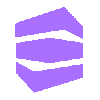Key Concepts and Hierarchy of Contentstack Elements
If you are new to Contentstack, this guide helps you explore the foundational components of Contentstack, understand how they relate to each other, and learn how to use them effectively to manage your content operations.
Platform Architecture
These components define the organizational structure of your content within Contentstack.
Organization
The organization acts as the parent entity for your company or team. It encapsulates multiple stacks and branches and manages all associated resources. Learn more about Organizations.
Stacks
A stack is a container that holds all the content (entries) and assets related to a site. It also serves as the central hub for collaboration across projects, where multiple users can work together. Learn more about Stacks.
Branches
Branches allow you to create multiple copies of your stack content. Changes can be made within different branches without affecting the main branch. Learn more about Branches.
Note: The term module may refer to a conceptual part of Contentstack, not a distinct feature.
Content Structure and Modeling
These elements enable you to define and organize the actual content you deliver to users.
Content Types
Content types let you define the structure or blueprint of a page or a section of your digital property. It helps you lay the foundation of your content. You use these to build out repeatable formats (e.g., blog posts, product pages). Learn more about Content Types.
Entries
Entries are the actual pieces of content created using one of the defined content types. To create an entry, content managers simply fill in data in the fields of a content type. Learn more about Entries.
Assets
Assets refer to all the media files (e.g., images, videos, PDFs, audio files, and so on) uploaded to Contentstack and reused across entries. Learn more about Assets.
Language and Localization
Contentstack offers multilingual support, allowing you to create entries in any language of your choice. Localization is the process of making an entry available in another language. Learn more about Localization.
Entry Variants
Variants in Contentstack Personalize are alternative versions of your content or experiences, each represented in the CMS as a Variant Group matching the experience name and managed via the Entry Editor. They let you deliver real-time personalized content, run A/B tests, and iteratively optimize campaigns by creating and analyzing multiple entry variants for different audiences or contexts. Learn more about Variants.
Visual Builder
Visual Builder provides a WYSIWYG (What You See Is What You Get) interface, allowing users to build and update content-rich pages visually. It's ideal for marketers or non-technical users who want to structure content without directly handling code or schema fields. Learn more about Visual Builder.
Users and Permissions
Manage who can do what inside a stack or organization.
Users
A user is any member who can access a stack within an organization. Learn more about Users.
Roles
A set of permissions that defines what a user can view, create, update, or delete. Stack Owners or Admins assign roles to users. Learn more about Roles.
Content Delivery
Manage where, when, and how your content is delivered to your audience.
Environments
A publishing environment corresponds to one or more deployment servers or a content delivery destination (e.g., staging, production) where entries and assets are published. Learn more about Environments.
Live Preview
The Live Preview feature allows you to see content changes in real time as you make them. Each edit is instantly reflected in the preview panel, helping you visualize updates before saving or publishing. This streamlines the content creation and review process. Learn more about Live Preview.
Releases
Releases are bundles of entries and assets that can be deployed (published or unpublished) together in a single action across environments. Learn more about Releases.
Publish Queue
Publish Queue places each publish or unpublish request into a background queue and processes them one after another. Users can track the status of each of these tasks in the Publish Queue. Learn more about the Publish Queue.
Regions
Regions define where your data is hosted. Contentstack currently supports six regions: AWS North America, AWS Europe, Azure North America, Azure Europe, GCP North America, and GCP Europe. Learn more about Regions.
Workflows
Workflows allow you to define the steps content must go through (e.g., Draft → Review → Approved) before publication. Supports conditional approvals and user assignments. Learn more about Workflows.
Webhooks
HTTP callbacks triggered by content changes. Used to notify or sync with third-party systems (e.g., Slack, AWS, Azure). Learn more about Webhooks.
Tokens
Contentstack APIs allow robust programmatic access to content. Contentstack has Delivery Tokens, Access Tokens, Authtokens, and Management Tokens. Tokens are required to authorize API calls. Learn more about Tokens.
Content Management Tools
Search for content, track, and monitor everything that happens within your stack.
Search Content
Search functionality makes it easy to find assets or entries within a specific stack. You can save custom Views, Search with Filters, perform a Quick Search, or use Advanced Search options for more precise results. Learn more about Search.
Timeline
Timeline allows you to preview how your website will look on a future date and time by simulating scheduled content changes—ideal for campaigns or planned launches. Learn more about Timeline.
Audit Log
Logs of all actions taken in a stack, including create/update/delete activities for content and assets. This helps the user track the current status of the existing content. Learn more about the Contentstack Audit Log.
Analytics
Centralized platform to monitor and view performance metrics and the usage data for your CMS, Launch, and Automate services. Learn more about Analytics.
Data Management
Manage deleted items and recover content as needed.
Trash
Temporarily retains deleted items, allowing users to restore them if needed. Learn more about Trash.
